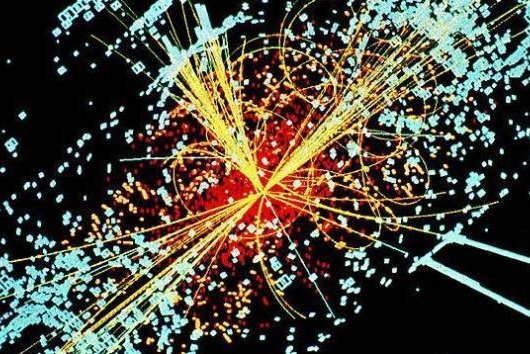CERN's simulated data example of a collision between two protons producing a Higgs boson. (CERN)
COPENHAGEN, Denmark, Nov. 7 (UPI) -- Scientists were quite excited when researchers last year announced they had observed the Higgs particle in the CERN particle accelerator known as the Large Hadron Collider. Prior to this discovery, the Higgs boson was a subatomic particle whose existence was predicated solely on theory, not direct evidence.
Now, a new study casts some doubt on the certainty of that discovery, suggesting the data collected with the LHC may explain a different type of subatomic particle, not the Higgs boson.
"The CERN data is generally taken as evidence that the particle is the Higgs particle," particle physicist Mads Toudal Frandsen explained in a recent press release. "It is true that the Higgs particle can explain the data but there can be other explanations, we would also get this data from other particles."
Frandsen was part of a team of scientists from the University of Southern Denmark who recently called into question the conclusiveness of the LHC data. Their hypothesis was detailed this week in the journal Physical Review D.
Frandsen and his colleagues say the data may explain the Higgs particle, but it also works for a theoretical type of particle known as the techni-higgs.
"A techni-higgs particle is not an elementary particle. Instead, it consists of so-called techni-quarks, which we believe are elementary," Frandsen explained.
"Techni-quarks may bind together in various ways to form for instance techni-higgs particles, while other combinations may form dark matter," said Frandsen. "We therefore expect to find several different particles at the LHC, all built by techni-quarks."
Frandsen and his fellow researcher believe another round of experiments using the CERN LHC accelerator could settle some of the uncertainty. Outfitting CERN with a more powerful accelerator, Frandsen said, would enable scientist to observe techni-quarks directly.
The suggestions made by this latest study piggyback on claims made by other scientists at the University of Southern Denmark, like particle physicist Thomas Ryttov, who have argued the Higgs is likely a composite of other, even smaller subatomic particles.















